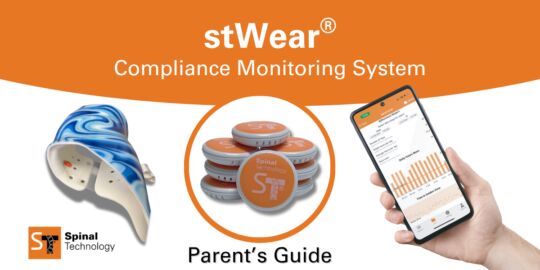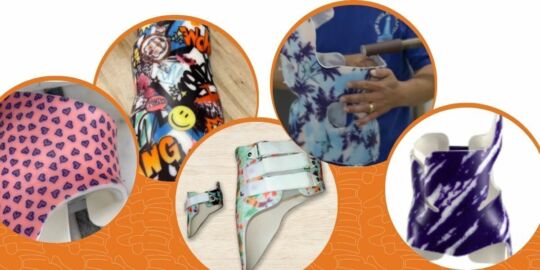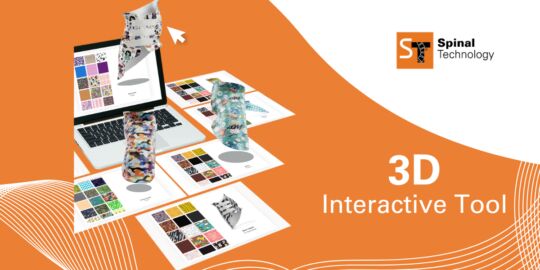Bivalve Spinal Brace - Wear and Care Information
Your new spinal brace is designed to provide you with secure, comfortable upper body support. The information below – along with the specific guidance from your orthotist and or physician – will tell you what to expect when using your spinal orthosis.
Follow your health care providers’ instructions carefully to use this device safely and effectively; this document is designed to give you general “getting started” instructions. Please take the time to read this information carefully. Always contact your orthotist if you have any questions.
Things to know
• Before donning orthosis patient should be sure to wear a tight-fitting, cotton t-shirt or stockinette. Wrinkles under the jacket can cause irritation and skin breakdown.
• The orthosis can be cleaned with soap and warm water or rubbing alcohol.
• Follow physician and orthotist instructions for length of orthosis wear.
• Follow physician and orthotist instructions for activities acceptable while wearing orthosis.
• Physician’s orders should supersede all protocol.
Bivalve Brace Donning Instructions
Related Links
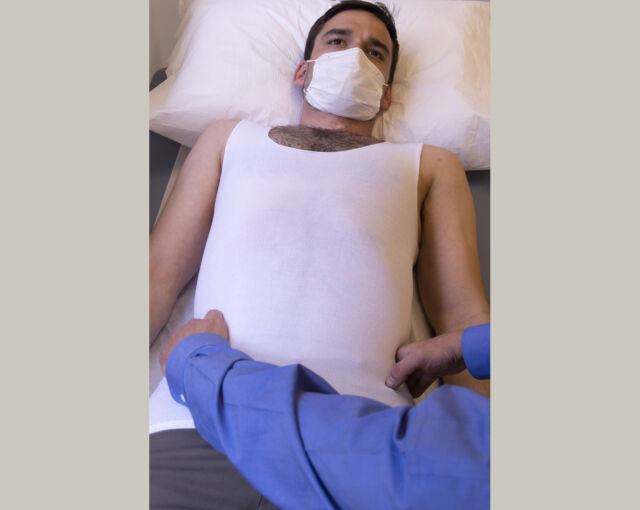
Step 1
Patient should be on back with hips flexed slightly. Palpate waist (area above hips and below ribs) to demonstrate proper position of orthosis location.
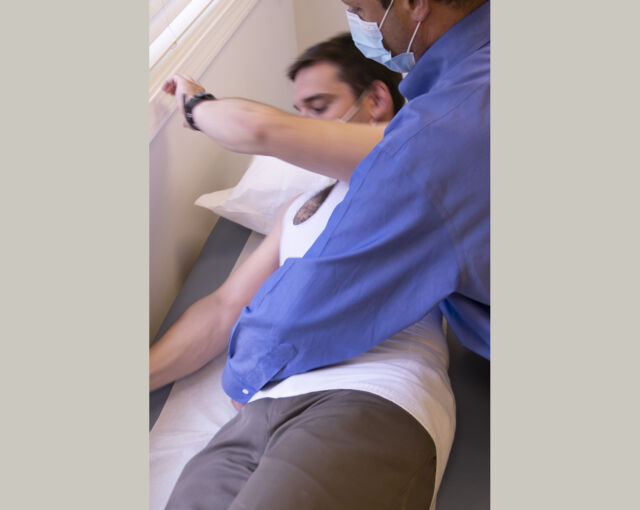
Step 2
Raise patient’s arm above their head. Log roll patient toward raised arm onto their side. Be sure hips and upper body move together without twisting.
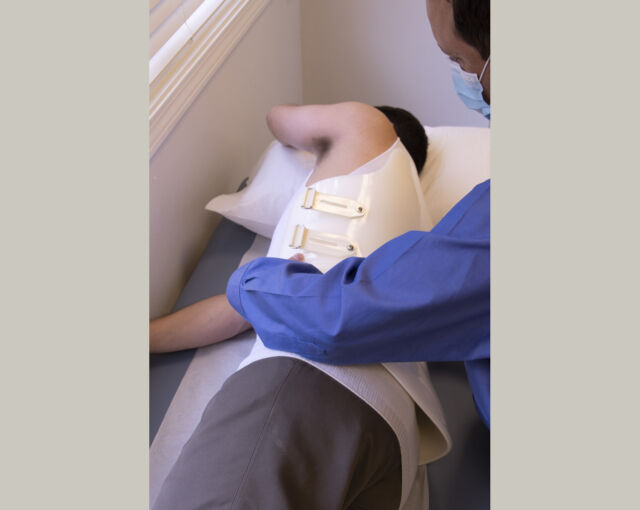
Step 3
Identify top & bottom of orthosis. Place back section of orthosis behind patient. Waist rolls in orthosis should align with patient’s waist.
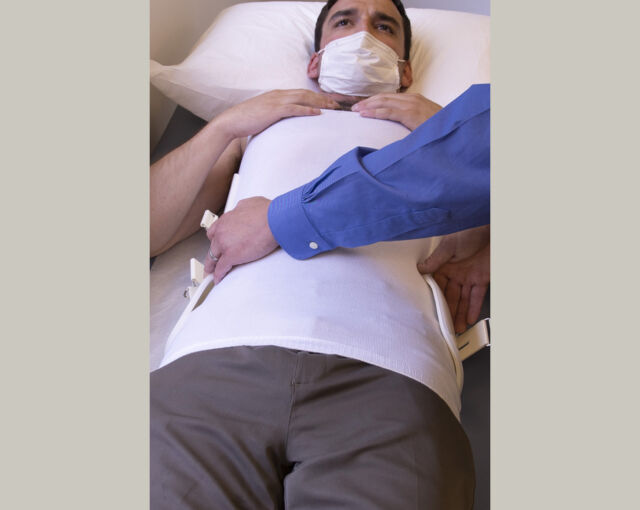
Step 4
Roll patient onto back with orthosis under them. Recheck alignment of waist rolls with patient in this position. Move orthosis accordingly.
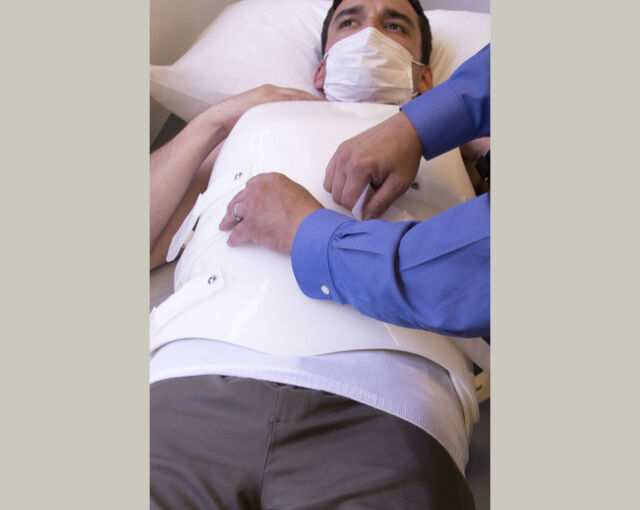
Step 5
Place front section of orthosis on patient noting top and bottom. Straps and loops should be across from each other.
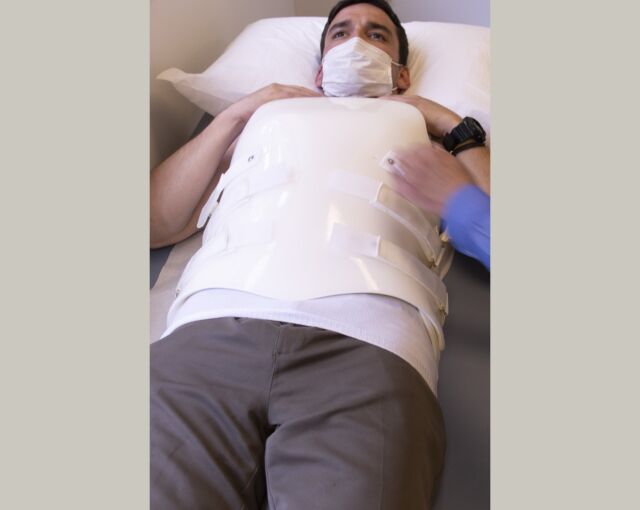
Step 6
Fasten middle straps first pulling both sides evenly. Tighten top or bottom straps next in same manner. Tighten all straps as needed.
Proper Strap Tension
Straps should be tightened so they are comfortably snug. The object is to eliminate excess motion between your body and the orthosis, but NOT to overtighten the straps
Areas of Redness
Some minor surface redness is common and should dissipate quickly. Check for localized redness after each wearing period and before continuing with the break-in schedule. If redness, irritation persists call your orthotist for adjustments.
Follow-up care
Follow-up visits with your Physician and Orthotist are vital for your healing – don’t skip any scheduled appointments. Adjustments for fit and function can be made by appointment with your orthotist.
Need more information?
Contact our Customer Service Team at 800 253 7868. We'll be glad to help you with your question.
